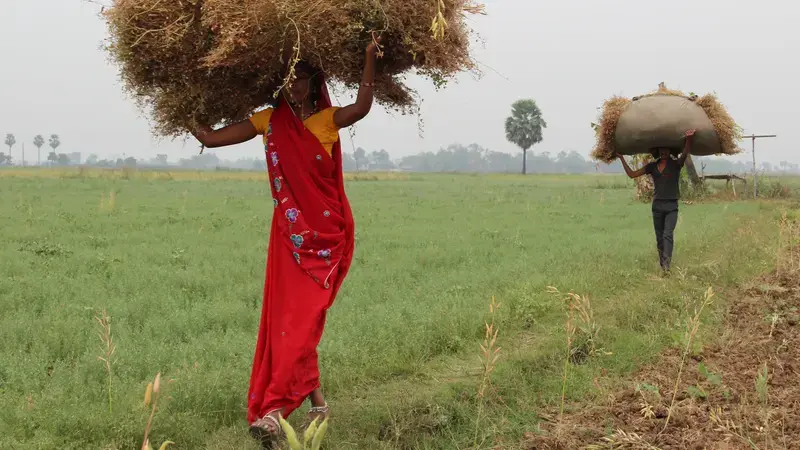Lentil biofortification research to fight hidden hunger

New Delhi – Hidden hunger is a lack of essential micronutrients. It occurs when people don’t have access to foods that contain vitamins and minerals and mainly eat staples like bread, rice, or corn. It starts during the first 1,000 days of the child's development, from the mother's pregnancy to the child's second birthday. Hidden hunger hinders growth and learning, and threatens long-term health. Ultimately, it negatively impacts economic development and society's prosperity.
Hidden hunger affects more than two billion population worldwide, especially in sub-Saharan Africa and South Asia, where pregnant women and pre-school children fall victim to iron and zinc deficiency.
Biofortification of food crop varieties with essential micronutrients is a way to address micronutrient deficiencies. ICARDA has been working together with national partners in Bangladesh, India, and Nepal – with support from HarvestPlus, a CGIAR program – on biofortification of lentils, an important pulse crop in South Asia.
Lentils are a rich source of protein and other minerals, including iron, zinc, and vitamins. When consumed together with rice, it can fight hidden hunger. Enhancing iron and zinc contents in lentil seeds – the edible part – through biofortification has been a key research focus among the partners.
Last month in New Delhi, ICARDA and national partners came together – through ICARDA’s South Asia and China Regional Program – for an annual meeting to review progress on development of lentil cultivar with high concentration of iron and zinc.
In the past year, the national partners have identified 18 new parental lines with high content of iron and zinc that can be used in cross-breeding programs. Substantial numbers of primary, secondary and final products have been generated. Newly developed high-iron and high-zinc genetic stocks have been shared through an international nursery network.
Bangladesh recently released a new super-early lentil variety “BARImasur-9” with 78 ppm of iron content. India released variety “IPL_220” with iron content of up to 113 ppm. Nepal released “Khajurah Masuro-4” with iron content of more than 75 ppm.
Along with previously biofortified lentils, these new varieties are being promoted through large quantities of quality-seed production and dissemination.
“Biofortification is an effective way to contribute to nutritional security,” said Parminder Virk, head of crop development of HarvestPlus. “Biofortified varieties of several crops, including lentil with high iron and zinc are now available to consumers.”
For more information, contact: Ashutosh Sarker, Head, ICARDA Food Legume Research Platform and Coordinator, South Asia and China Regional Program
